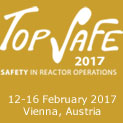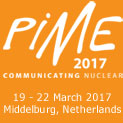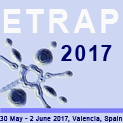Radon
 scroll scroll 
Inert radioactive gas which is produced from the radioactive
decay of uranium and thorium. Due to the very long half-lives, the earth's
crust contains since its formation among other substances the radionuclides
uranium 238, uranium 235 and thorium 232. These convert via a chain
of radioactive intermediate products with quite different half-lives
to stable lead as the final product. These intermediate products include
three radon nuclides: radon 222 (half-life 3.8 days) is generated as
a decay product of radium 226, which results from the radioactive decay
of uranium 238. In the decay chain of thorium 232, radon 220 (half-life
54 s) occurs and in the decay chain of U 235, radon 219 (half-life 3.96
s). Radon is released wherever uranium and thorium are present in the
ground and enters the atmosphere or houses. The radium concentration
of the ground and its permeability for this radioactive noble gas is
decisive for the radon concentration in the air. Apart from the regional
variations, the radon concentration in the atmosphere close to the ground
is also subject to seasonal and climatic variations. In buildings, the
radon concentration depends essentially on the structural circumstances.
For example, in Germany, the annual average value of the radon concentration
in the air close to the ground is 15 Bq/m3 and in buildings
60 Bq/m3. Radon concentrations greater than 200 Bq/m3 in ground floor living rooms are not uncommon. Regarding the radiation
exposure of people, it is not the radon itself that is important, but
the short-lived decay products. These enter the respiratory tract with
breathed in air and may reach radiation-sensitive cells with its energy-rich
alpha radiation. The short-lived decay products of radon, with 1.4 millisievert
per year, account for more than half the total effective dose by natural
radiation sources.
back
|
|
ENS conferences |
| |
 |
TopSafe 2017
12-16 Feb. 2017
Vienna, Austria |
 |
PIME 2017
19 - 22 March 2017, Middelburg Netherlands |
 |
RRFM 2017
14 - 18 May 2017 in Rotterdam, Netherlands |
 |
ETRAP 2017
30 May - 2 June 2017, Valencia, Spain |
|
|